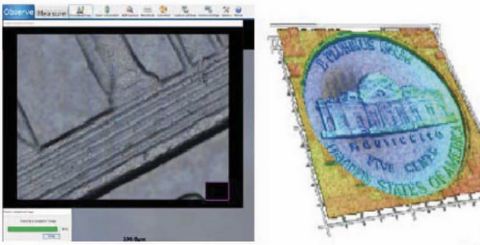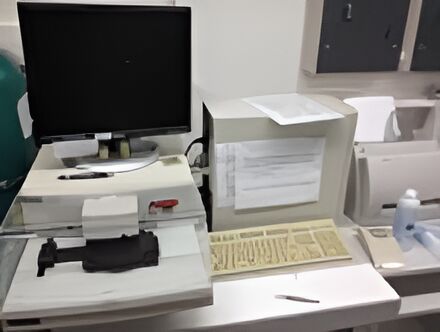Surface Analysis Instrumentation
CCMR has several surface analysis instruments for analyzing, characterizing, and imaging material surfaces.
The Thermo Fisher Scientific Nexsa G2 X-ray Photoelectron Spectrometer (XPS) is a fully automated surface analysis instrument with many capabilities such as near-surface elemental identification and quantification, chemical bonding and oxidation state determination, ion beam depth profiling, chemical mapping of sample surfaces, and work function measurements.
Nexsa G2 XPS
Primary staff: Alicia Tripp; secondary: Jon Shu
Location: Clark Hall D10
Nexsa specifications and capabilities page
The Asylum MFP-3D Bio Atomic Force Microscope (AFM) is a scanned probe instrument which can image a sample surface with atom-scale resolution. Specialized probes allow many types of sample-probe interactions to be studied via force curves. A variety of electronic and magnetic microscopy methodologies are available as well.
Asylum MFP-3D AFM
Primary staff: Steve Kriske, Alicia Tripp
Location: Clark Hall D15
AFM specifications and capabilities page
Our Keyence VK-X260 Laser-Scanning Profilometer uses confocal laser optics and 408 nm light to quickly provide 3D surface profiles, accurate surface measurements, roughness parameters, and more. Large analysis areas can be achieved by image stitching. 1-D surface profilometry is useful for quickly gathering surface information like sub-nanometer step heights, roughness, or substrate quality and can be performed on our Tencor AlphaStep 500 instrument.
Keyence VX-X260 3D Profilometer
Primary staff: Alicia Tripp; secondary: Steve Kriske
Location: Clark Hall D15
Tencor AlphaStep500 1D Profilometer
Primary staff: Steve Kriske; secondary: Alicia Tripp
Location: Clark Hall D15
The Tencor AS500 profilometer is a metrology tool that generates a line-scan topographical profile of the surface of a sample via a stylus that contacts the surface and scans across a prescribed length (up to 5 mm). Vertical resolution is 1 Å with a 13 µm range or 25 Å over a 300 µm range.







